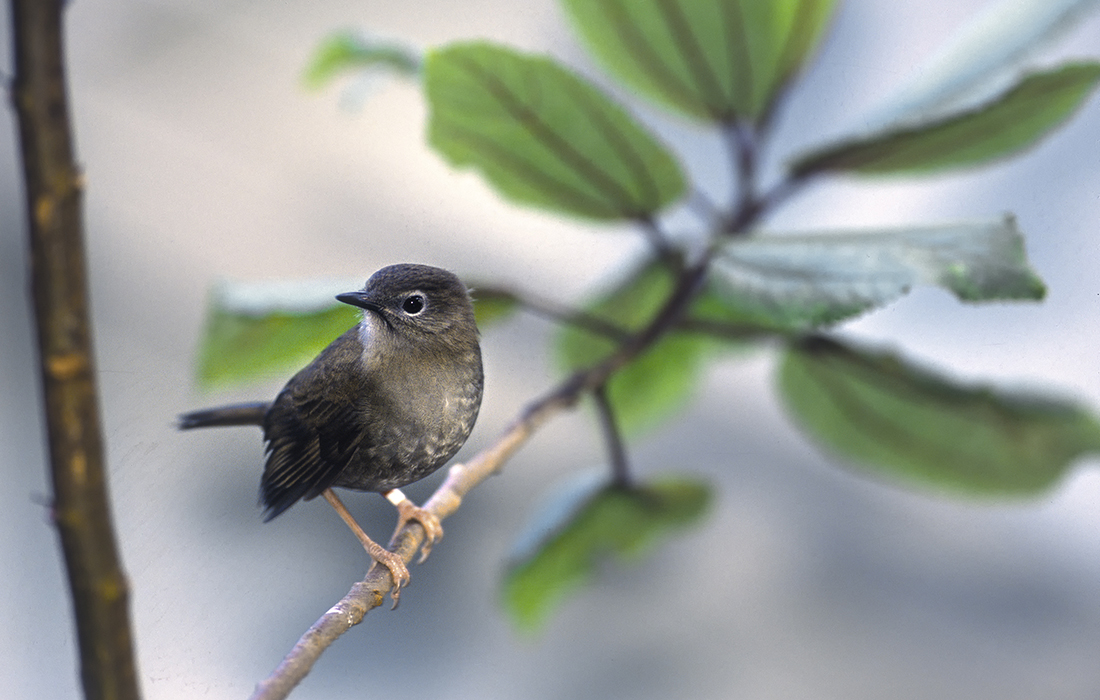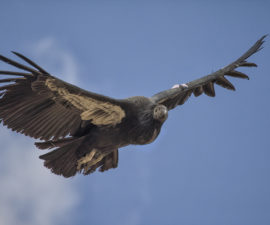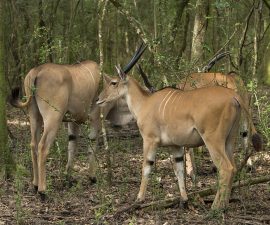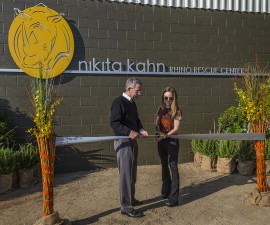BY Wendy Perkins
Photography by Ken Bohn
Videography by Lee Rieber
As you read this, a trilling whistle fills the forest of the Alaka’i Wilderness preserve on the Hawaiian island of Kauai. It is the call of the puaiohi (pronounce it by sounding out each letter, like this: poo-ah-ee-OH-hee), also called the small Kauai thrush, a secretive gray and brown bird that easily goes unseen in the thick vegetation of its tropical forest home. Until recently, it almost went unseen forevermore, as the species neared the brink of extinction. But a conservation partnership of San Diego Zoo Global, the Kauai Forest Bird Recovery Project, the State of Hawaii Land and Natural Resources Division of Forestry and Wildlife, and the U.S. Fish and Wildlife Service stepped in to help.
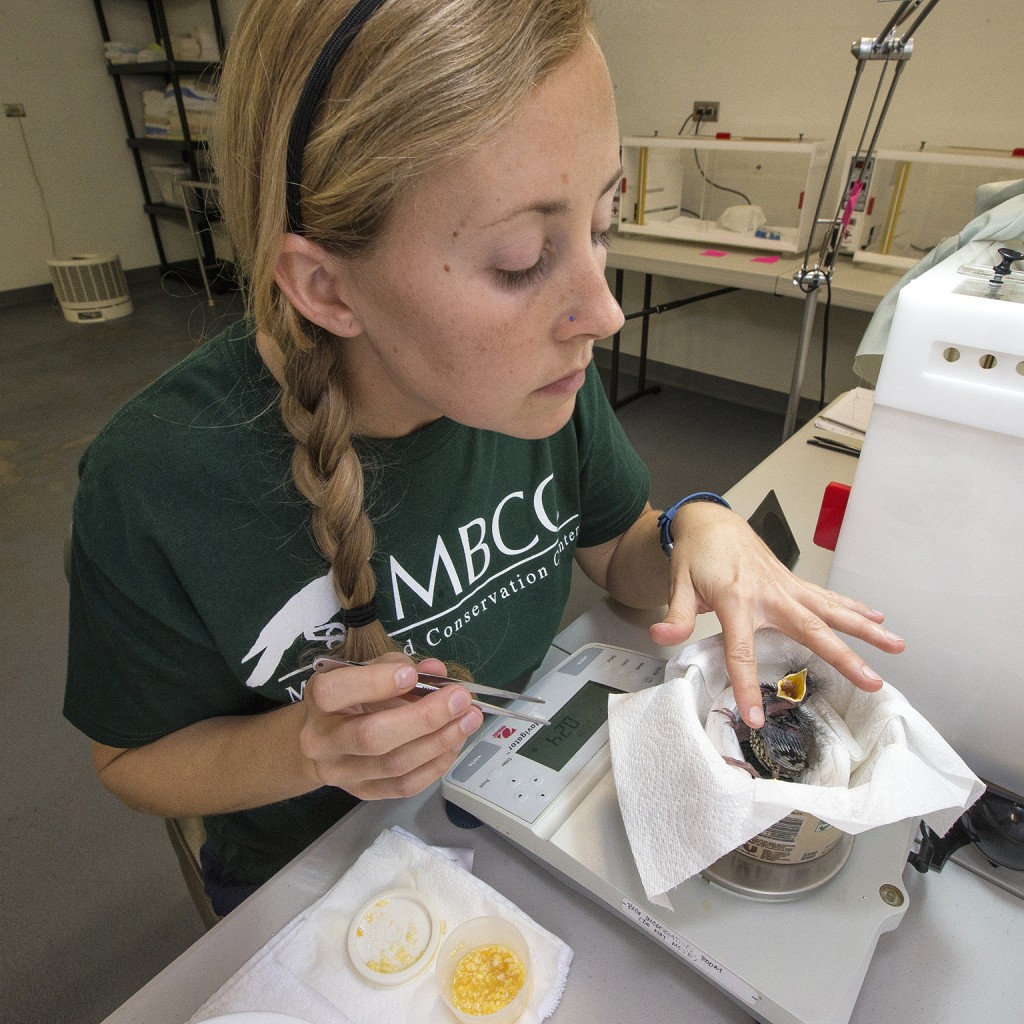
BABY (BIRD) STEPS
Every puaiohi chick that is reared represents hope for the continuation of the species.
WORKING ON AN ENCORE
The only remaining endemic birds on Kauai that primarily eats fruits, puaiohi forage in the dense tangle of plants lining the streams that deeply incise the Alaka’i Plateau. During the breeding season each spring, they add more insects to their diet and nest in eroded pockets on cliff faces. The melodious song of these birds could once be heard throughout the island, but by the 1960s they were a rare sight; by 1967, they were listed as endangered. After Hurricane Iniki walloped the Hawaiian Islands in September 1992, the species clung to survival by a fine thread, and extinction seemed imminent. However, the last puaiohi hadn’t sung…yet.
The Hawaii Endangered Bird Conservation Program (HEBCP), managed by San Diego Zoo Global, joined in the efforts to help the puaiohi in 1996. At the time, the population size was estimated at about 200 birds. Over the last 20 years, egg by egg and chick by chick, the HEBCP hatched nearly 400 puaiohi. These eggs were laid by a group of puaiohi housed specifically for breeding at our conservation centers on Maui and the Big Island.
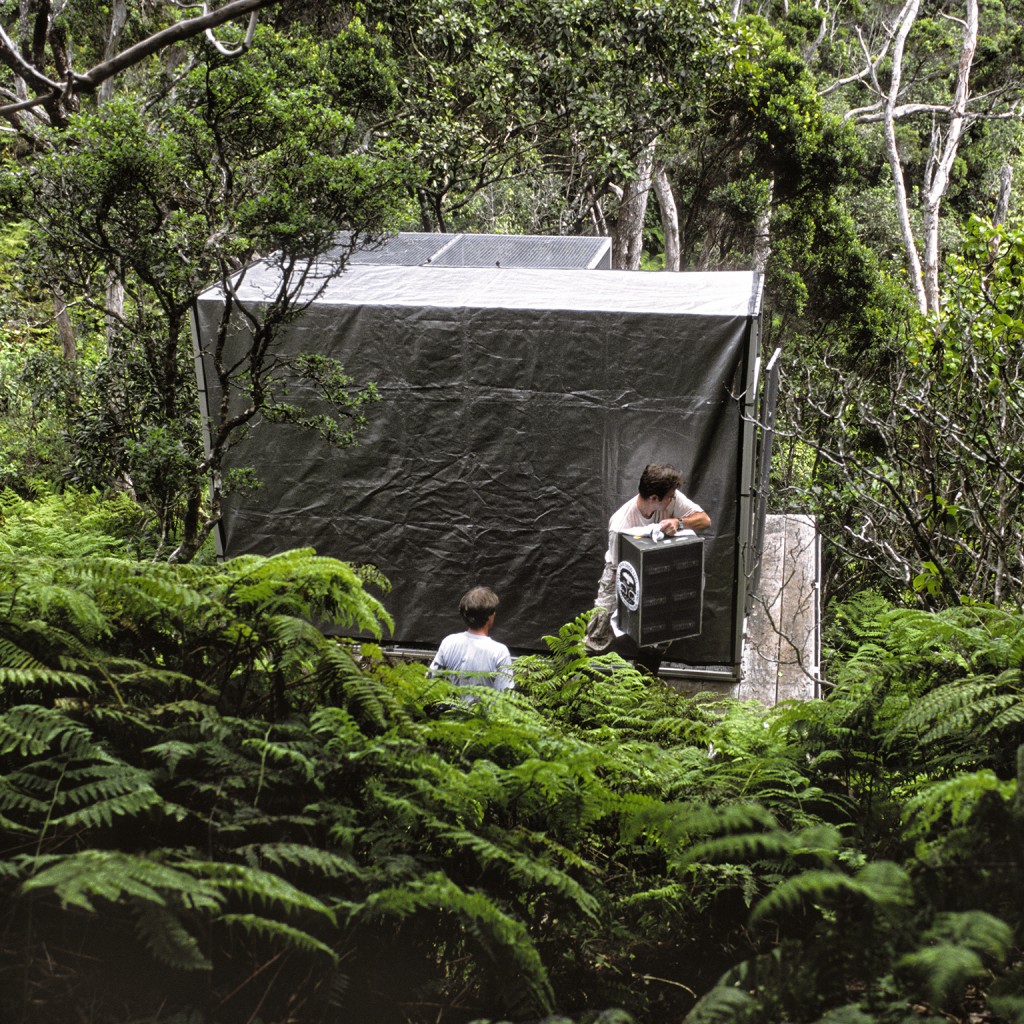
RELEASE PREPARATIONS
Puaiohi are transported from our conservation centers on Maui and the Big Island into the wet rain forest of Kauai.
INCUBATING A FUTURE
As the eggs were laid, they were carefully collected, candled to determine the presence of an embryo, and placed in temperature- and humidity-controlled incubators. The staff monitored the eggs closely, turning them to ensure even incubation and weighing them to monitor development. Once the eggs hatched, HEBCP staff hand-reared the chicks following a meticulous protocol. At last, when they were deemed ready for release, groups of young birds were transported to their native island of Kauai and carried by staff up into the dense habitat. After an acclimation period in large aviaries, the doors were opened and the birds flew into the forest to join the existing—and growing—puaiohi population.
“We did the first release in 1999,” said Bryce Masuda, HEBCP conservation program manager, “and our hard-working team has continued releases nearly every year since then.” Pulling eggs from nests in the managed population usually results in the female laying more eggs. This behavior, called “double clutching,” allows for more offspring production and the potential to increase a population more quickly.
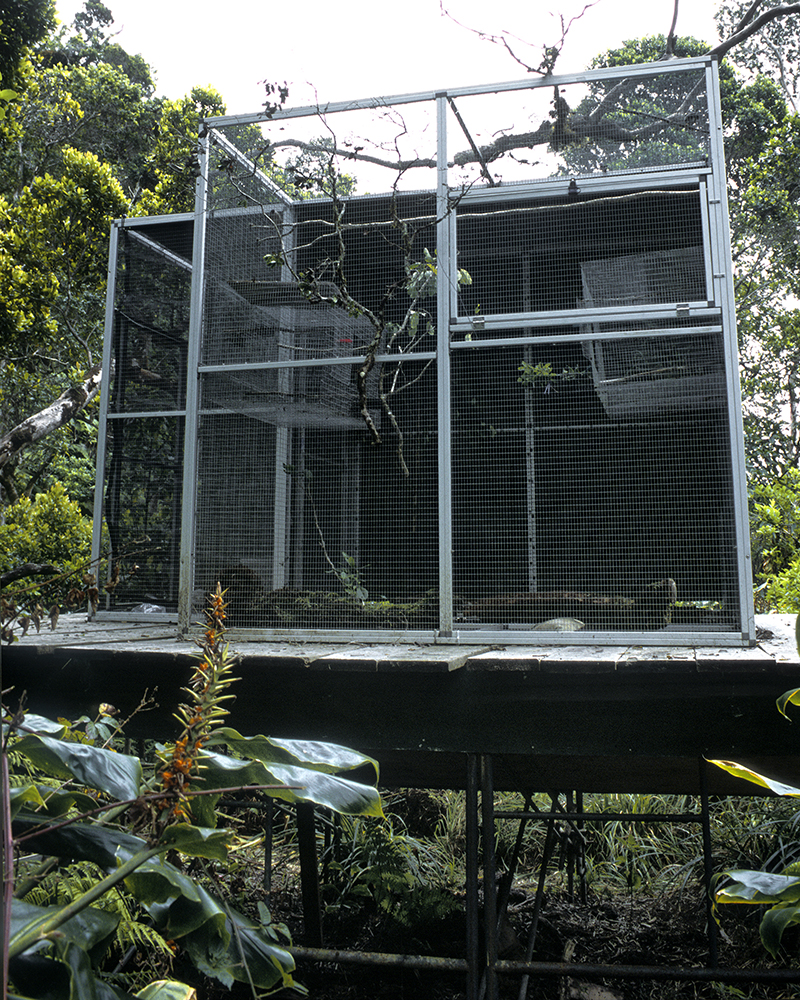
RELEASE AVIARY
Birds are held in an aviary in the middle of the forest prior to release to ensure they adapt to their new home in the wild.
ONE CHAPTER ENDS…
Altogether, the HEBCP has released more than 230 puaiohi. Puaiohi generally lay two eggs at a time, and will double clutch if a nest fails or the eggs are removed. We were able to make the most of this natural behavior as part of the plan to increase the numbers of puaiohi.
At the same time we were boosting the population, the number of wild puaiohi slowly grew to more than 500 birds—and numbers seem to be stable. Yet, as Bryce pointed out, this is just the end of one aspect of the story of this species: “It wouldn’t be as impactful if it weren’t for the amazing work our partners are doing making sure these birds have a habitat to return to.”
With the population at a more comfortable level, the conservation partnership decided to temporarily halt the puaiohi breeding program, and the remaining birds in our facilities were released in March. “It’s a bittersweet moment for those of us who have been working with these birds on a daily basis,” said Bryce. “We’ll miss seeing them every day, but are delighted to be part of the collaborative effort to ensure this species survives into the future.” Our partners will continue the work by intensifying efforts to monitor the birds, remove invasive weeds, and control introduced mammalian predators such as rats.”
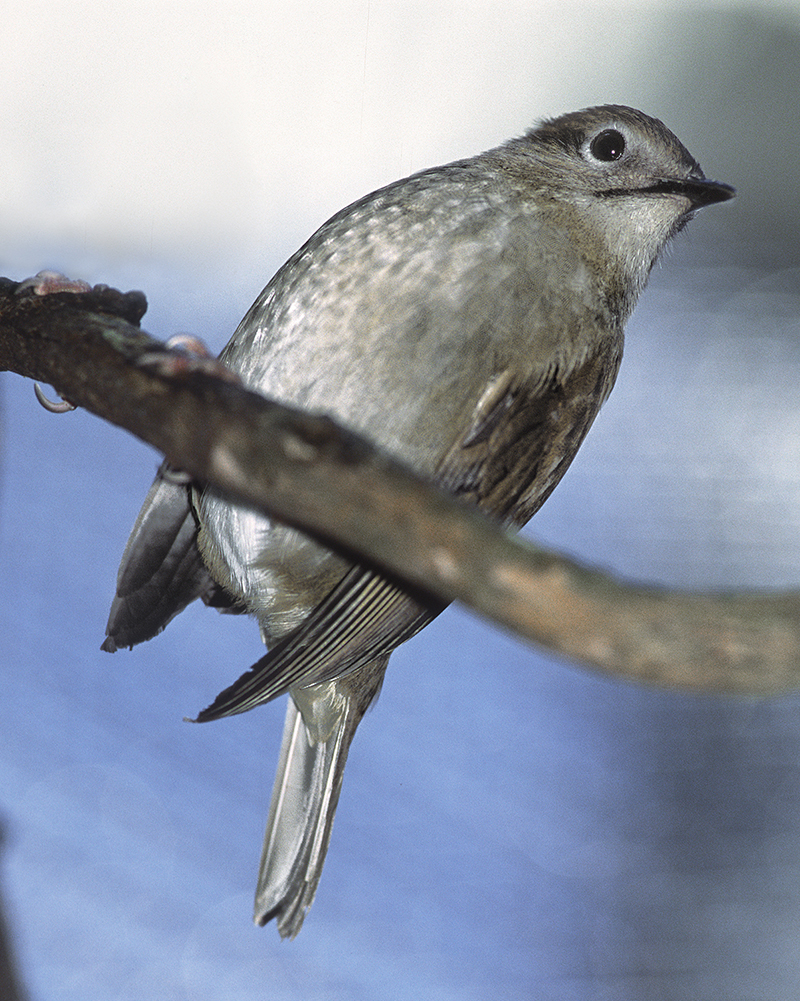
INTO THE WILD
A young puaiohi explores its new habitat after being released into the wild.
…ANOTHER BEGINS
There are a number of small, quiet moments that take place when a group works to save an endangered species. Each time an individual is born (or hatched) and each day it survives are deeply felt among the people involved. And when, over time, after exhausting efforts and years of sweat, the goal is reached and a population becomes stable enough for such a project to ease, what comes next?
“Our collaborative efforts with the U.S. Fish and Wildlife Service and State of Hawaii Division of Forestry and Wildlife will now shift focus to other Kauai-endemic birds that need help,” Bryce explained. Those are the akeke’e and akikiki, two birds that share the same forest as the puaiohi. The struggle continues, but success with the puaiohi is an encouraging stanza in the battle song against extinction.
Our sincerest thanks to donors who have generously supported the Hawaii Endangered Bird Conservation Project.

